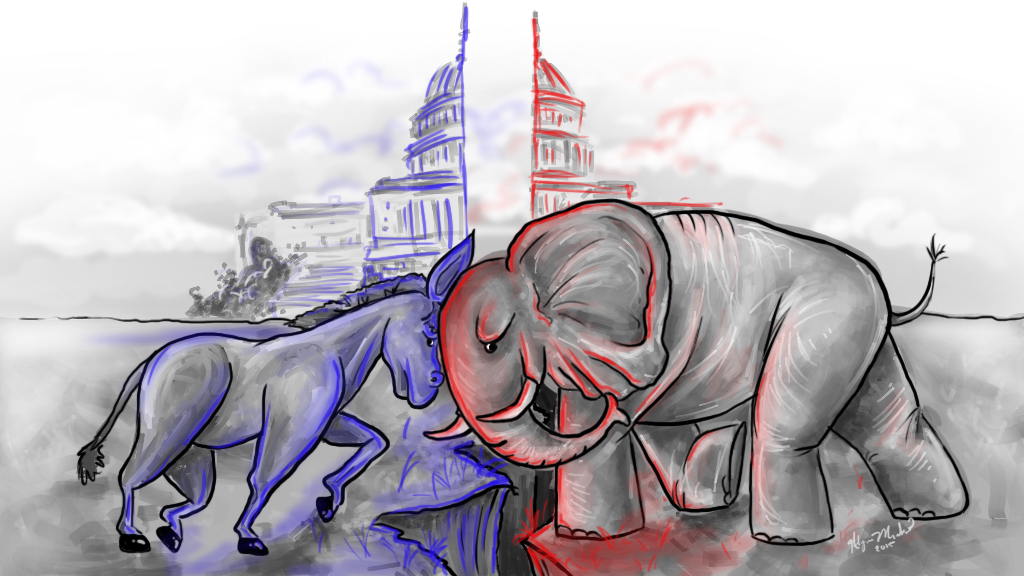The Toxic Polarization of the Federal Government
by Bailey Gribben | published Nov. 8th, 2015
As the presidential election rolls along from one party’s debate to the next, one thing is extremely prevalent in both the Republican and Democratic debates: both parties really like to contradict each other’s views.
This has become a very serious problem in the past few years and has caused a government shutdown, as well as the majority of Democratic bills from getting immediately voted down by the majority Republican side of Congress. This type of political stalemate is toxic to our nation’s ability to develop further and for new pieces of legislature to advance in government. As more of the national media outlets are covering the turmoil of our extremely divided government, there is an increase in public awareness on the issue of governmental polarization. Due to this newfound public awareness in the government’s actions (or lack of actions), more people are beginning to question if the current format of our government is the most effective way to run the nation.
In an effort to make their parties' ideologies clearer, the RIT Republicans and the RIT Democrats held a mock presidential debate on October 19 with the help of the Debate Society. Both sides opened the debate with a statement of their party’s main ideology. But as the debate went to the major topics, such as universal health care, foreign policy and college, the answers given by both parties began to appear more similar than different. One topic that both parties seemed to share value in is immigration. The question asked to the RIT Republicans was “How do you believe that economically allowing immigrants to stay in the U.S. is beneficial?” The Republicans then replied, “We can stop sending money overseas if we can go forward with a faster naturalization process to truly integrate these [immigrants already in the country] into the country; it will solve the problem of immigrants sending money abroad back to their home country.” The Democrats then responded to the same question with, “We do agree with your point to make naturalization in the U.S. faster. You can’t say that sending money abroad is hurting our economy.”
Clearly, the parties share some ideas but still have their conflicting beliefs. The debate ended with both sides giving their closing statements in which the Democrats stated, “The nation seems to be supporting more progressive ideas. We want a revolution but it can only be done if both parties work together.” The Republicans agreed, while saying, “Polarization is becoming a growing problem in this country.”
As seen in the RIT mock debate, the millennial generation is calling for a decrease in polarization between both sides of the government, but what are political analysts noticing about our federal government’s polarization? What are they saying about the matter? In a recent Washington Post article, Morris P. Fiorina and Samuel Abrams analyzed the negative effects of political polarization on the way Americans view the government. “What has changed is how partisans are distributed in terms of their ideology and issue opinions," the article states. "Self-identified Democrats have become more homogeneously liberal and self-identified Republicans more homogeneously conservative. And the differences between the two partisan groups on issues have increased, although not nearly as much as those among party elites."
The polarization described by Fiorina and Abrams is the main reason why the general public has lost trust in the government’s representative ability as well as the effectiveness of the legislators to get things done. If the federal government wants a larger voter turnout, then they are clearly going to have to limit the amount of polarization that is occurring across the aisle in Congress. The toxicity of the two parties always contradicting each other has resulted in a population not being able to trust the centuries-old representative organization that was created by the people and for the people.
If “the people” feel misrepresented by this organization, then what is it trying to represent?



